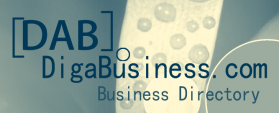Managing Risk |
| Date Added: March 13, 2007 05:48:43 AM |
| Author: |
| Category: Money & Finance: Bonds |
| Every bond carries some risk that the issuer will default on repayment of the principal or suspend interest payments. Once that risk is measured (see 'Measuring Risk' elsewhere in this series), then what? First, a review. Duration: Duration measures a bond's interest rate risk, expressed in years. The longer the duration, the more sensitive the bond's price is to changes in interest rates. When interest rates change, a bond's price will change by an amount related to its duration. For example, if a bond's duration is 5 years and interest rates fall 1%, a bond's price will rise by approximately 5%. Therefore, if interest rates are expected to rise, invest in bonds with lower durations. Low duration means less volatility or price risk. In general, the shorter a bond's maturity, the less its duration. Bonds with higher yields also have lower durations. ('Duration' is not the same as 'maturity', which is the date the principal repays. Duration is a technical approximation. See your favorite search engine for details and a 'Duration Calculator'.) [Convexity also measures interest rate risk, but more accurately in an environment where yield change is greater or within shorter time frames. The concept is more technical and we'll save it for elsewhere.] So, what to do with this information? Managing risk is essentially an exercise in comparing how much capital you have against what you can afford to lose should an investment go sour, and what your goals are. Investors with a low psychological or financial tolerance for risk would be well advised to accept the inevitability of lower yields. Tax-free muni's (municipalities) or AAA corporates are suitable for such investors. Investors with the time, temperament and funds to endure greater risk can lean toward lower ratings with higher yields. Managing risk involves comparing instruments (prices and yields) available today with a prediction of what will be available tomorrow, then including inflation and tax considerations. Is a 5% bond selling at 102 better than a 4% tax-free selling at 100, when you add the effect of a 28% tax rate? Let's see: Assume a $1000 bond. At 102 (2% above par, i.e. face value) that's $1020. 5% annual interest payment amount is $1000 x .05 = $50. At 28% tax, the after tax amount = $35.28 The after-tax yield = 35.28/1020 = 3.46%. For the 4% bond: $1000 x .04 = $40. Since the muni is tax-free, the yield is 40/1000 = 4.0%. Part of the effect is due to taxable vs tax-free, another part from the discount or premium as a result of the coupon compared to prevailing rates. Include both factors when making calculations. Other forms of risk than interest rate and credit risk exist. (Credit risk is the possibility of default on principal or suspension of interest payments. Interest rate risk is that incurred by the chance that rates will change over the lifetime of the bond.) Liquidity is also a factor. Unlike most stocks, bonds - though the market as a whole is much larger - often do not attract buyers and sellers as readily. It may be - and happens often enough - that a buyer is harder to find unless the seller is willing to sell at a considerable discount. Consider your goals. Are you seeking predictable cash flows and willing to retain the bond to maturity? Or, are you seeking the highest yields and willing to endure not only the credit risk, but the liquidity risk involved in selling a bond others may rate as 'junk'? The choices can only be made wisely by the investor willing to do the extra research entailed in bond trading. |
|
|




